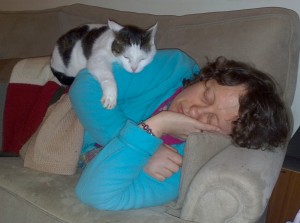Area of Study 1: Mind, Brain and Body
Learning Outcome 1: On completion of this unit the student should be able to explain the relationship between the brain, states of consciousness including sleep, and behaviour, and describe the contribution of selected studies and brain research methods to the investigation of brain function.
Key knowledge
This knowledge includes:
• consciousness as a psychological construct informed by the work of René Descartes and William James
• concepts of normal waking consciousness and altered states of consciousness, including daydreaming, meditative and alcohol-induced, in terms of levels of awareness, content limitations, controlled and automatic processes, perceptual and cognitive distortions, emotional awareness, self-control and time orientation
•

sleep as an altered state of consciousness: purpose, characteristics and patterns of the stages of sleep including rapid eye movement (REM) and the non-rapid eye movement (NREM) stages of sleep
• methods used to study the level of alertness in normal waking consciousness and the stages of sleep:
– measurement of physiological responses including electroencephalograph (EEG), electro- oculargraph (EOG), heart rate, body temperature and galvanic skin response (GSR)
– the use of sleep laboratories, video monitoring and self reports
• the effects of total and partial sleep deprivation:
– loss of REM and NREM sleep
– sleep recovery patterns including amount of sleep required, REM rebound and microsleeps
– sleep-wake cycle shifts during adolescence compared with child and adult sleep including delayed onset of sleep and need for sleep
• the interaction between cognitive processes of the brain and its structure including:
– roles of the central nervous system, peripheral nervous system (somatic and autonomic) and autonomic nervous system (sympathetic and parasympathetic)
– roles of the four lobes of the cerebral cortex in the control of motor, somatosensory, visual and auditory processing in humans; primary cortex and association areas
– hemispheric specialisation: the cognitive and behavioural functions of the right and left hemispheres of the cerebral cortex, non-verbal versus verbal and analytical functions
– the role of the reticular activating system in selective attention and wakefulness; role of the thalamus in directing attention and switching sensory input on and off
• contribution of studies to the investigation of cognitive processes of the brain and implications for the understanding of consciousness including:
– studies of aphasia including Broca’s aphasia and Wernicke’s aphasia
– spatial neglect caused by stroke or brain injury
– split-brain studies including the work of Roger Sperry and Michael Gazzaniga
– perceptual anomalies including motion after-effect, change blindness, synaesthesia
• the application and use of brain research methods in investigating the relationship between biological and cognitive factors of human behaviours including:
– direct brain stimulation and transcranial magnetic stimulation (TMS)
– brain recording and imaging techniques: computed tomography (CT), positron emission tomography (PET), single photon emission computed tomography (SPECT), magnetic resonance imaging (MRI), and functional magnetic resonance imaging (fMRI)
• research methods and ethical principles associated with the study of the brain and states of consciousness
Area of Study 2: Memory
Learning Outcome 2: On completion of this unit the student should be able to compare theories that explain the neural basis of memory and factors that affect its retention, and evaluate the effectiveness of techniques for improving and manipulating memory.
Key knowledge
This knowledge includes:
• mechanism of memory formation:
– role of the neuron in memory formation informed by the work of E. Richard Kandel – roles of the hippocampus and temporal lobe – consolidation theory – memory decline over the lifespan
– amnesia resulting from brain trauma and neurodegenerative diseases including dementia and Alzheimer’s disease
• comparison of models for explaining human memory:
– Atkinson-Shiffrin’s multi-store model of memory including maintenance and elaborative rehearsal, serial position effect and chunking
– Alan Baddeley and Graham Hitch’s model of working memory: central executive, phonological loop, visuo-spatial sketchpad, episodic buffer
– levels of processing as informed by Fergus Craik and Robert Lockhart
– organisation of long-term memory including declarative and episodic memory, and semantic network theory
• strengths and limitations of psychological theories of forgetting:
– retrieval failure theory including tip-of-the-tongue phenomenon
– interference theory
– motivated forgetting as informed by the work of Sigmund Freud including repression and suppression
– decay theory
• manipulation and improvement of memory:
– forgetting curve as informed by the work of Hermann Ebbinghaus
– measures of retention including the relative sensitivity of recall, recognition and relearning
– use of context dependent cues and state dependent cues
– mnemonic devices including acronyms, acrostics, peg-word method, narrative chaining and method of loci
– effect of misleading questions on eye-witness testimonies including the reconstructive nature of memory informed by the work of Elizabeth Loftus
